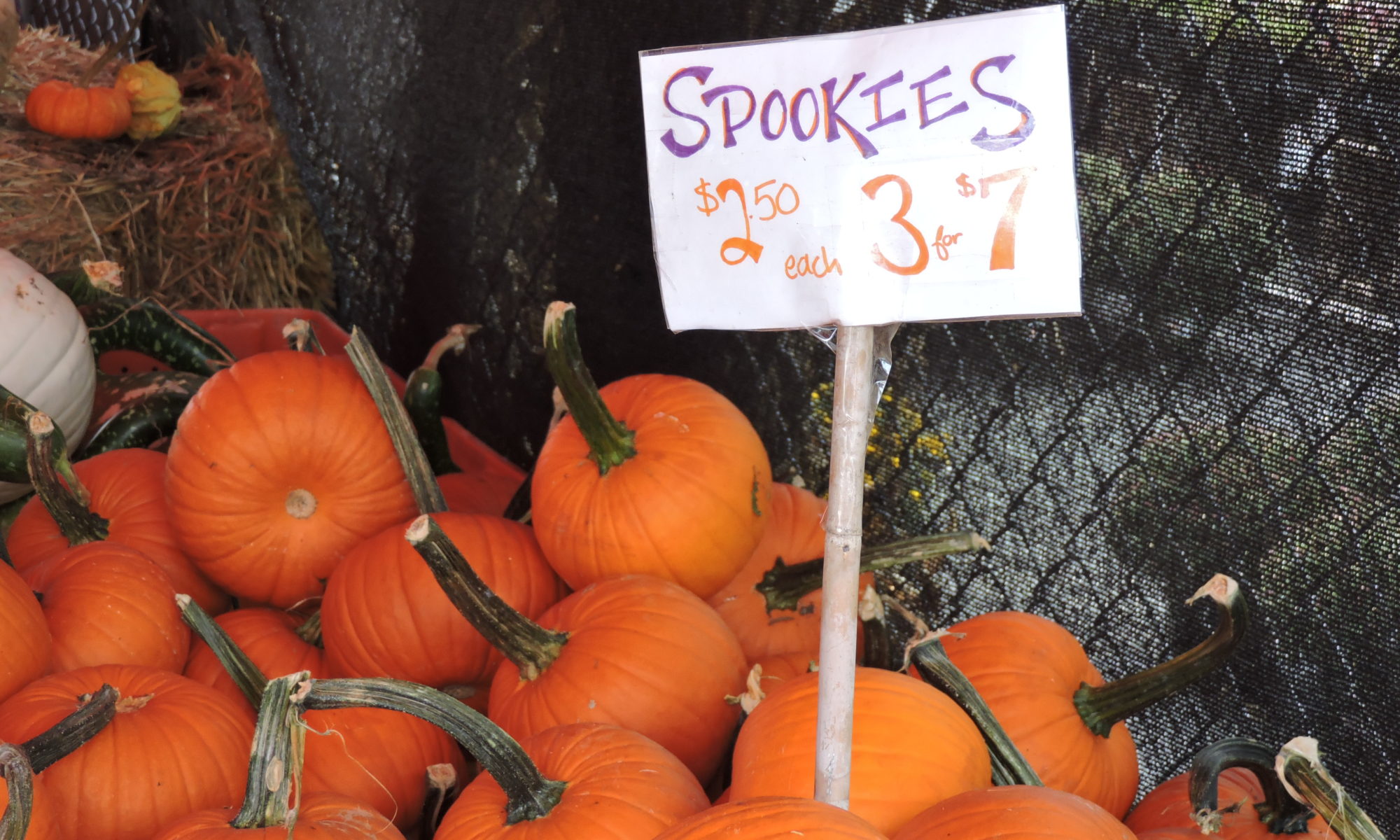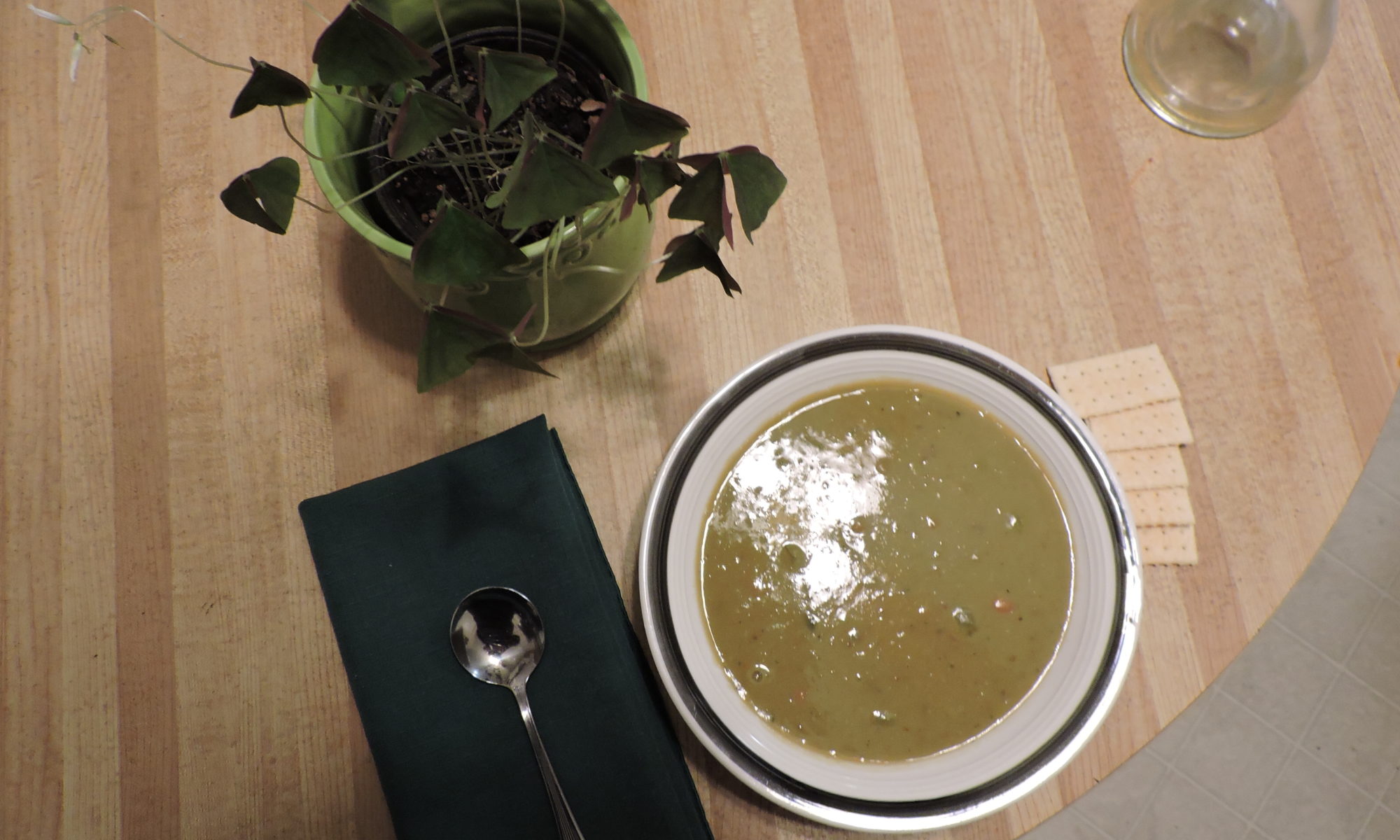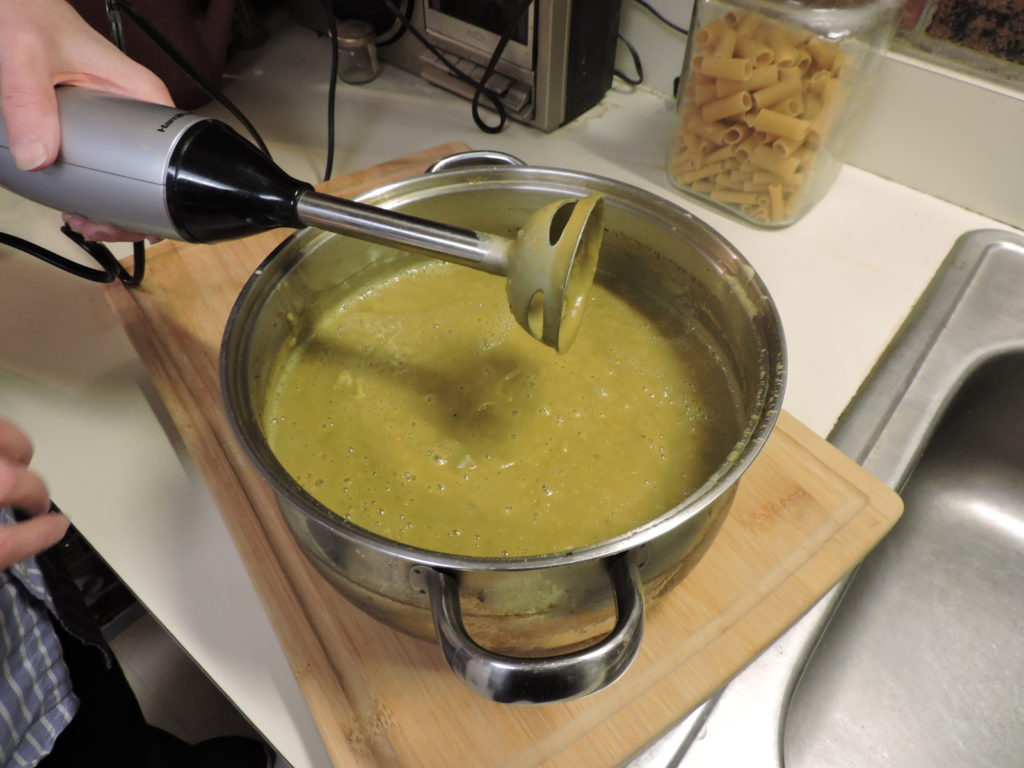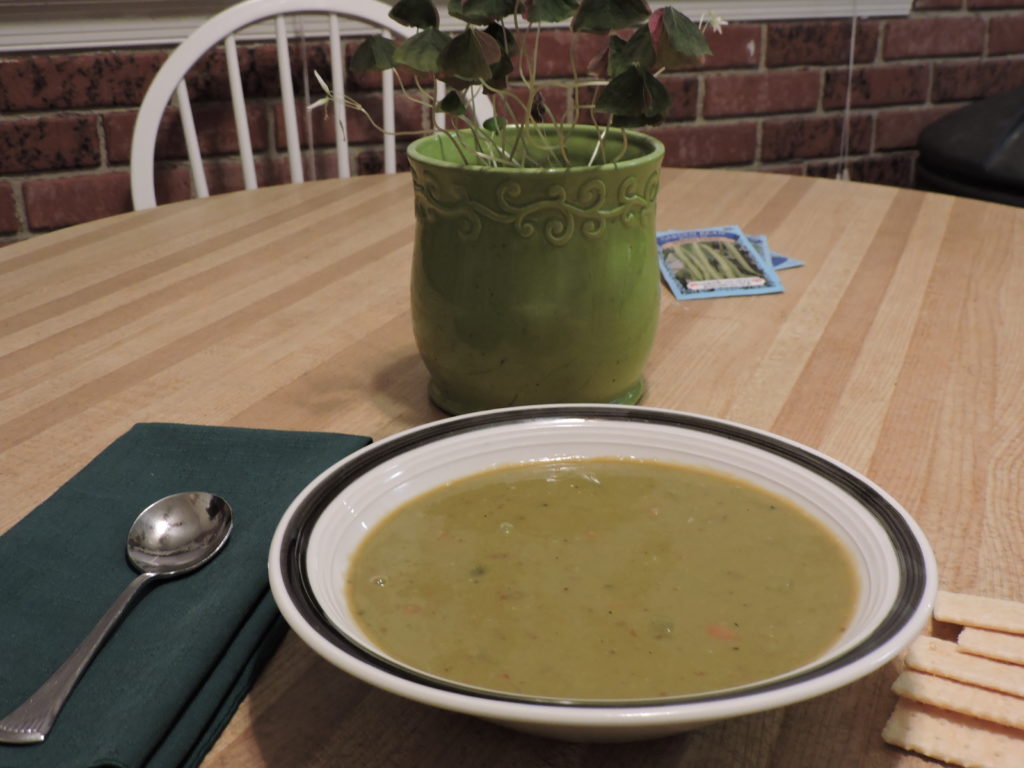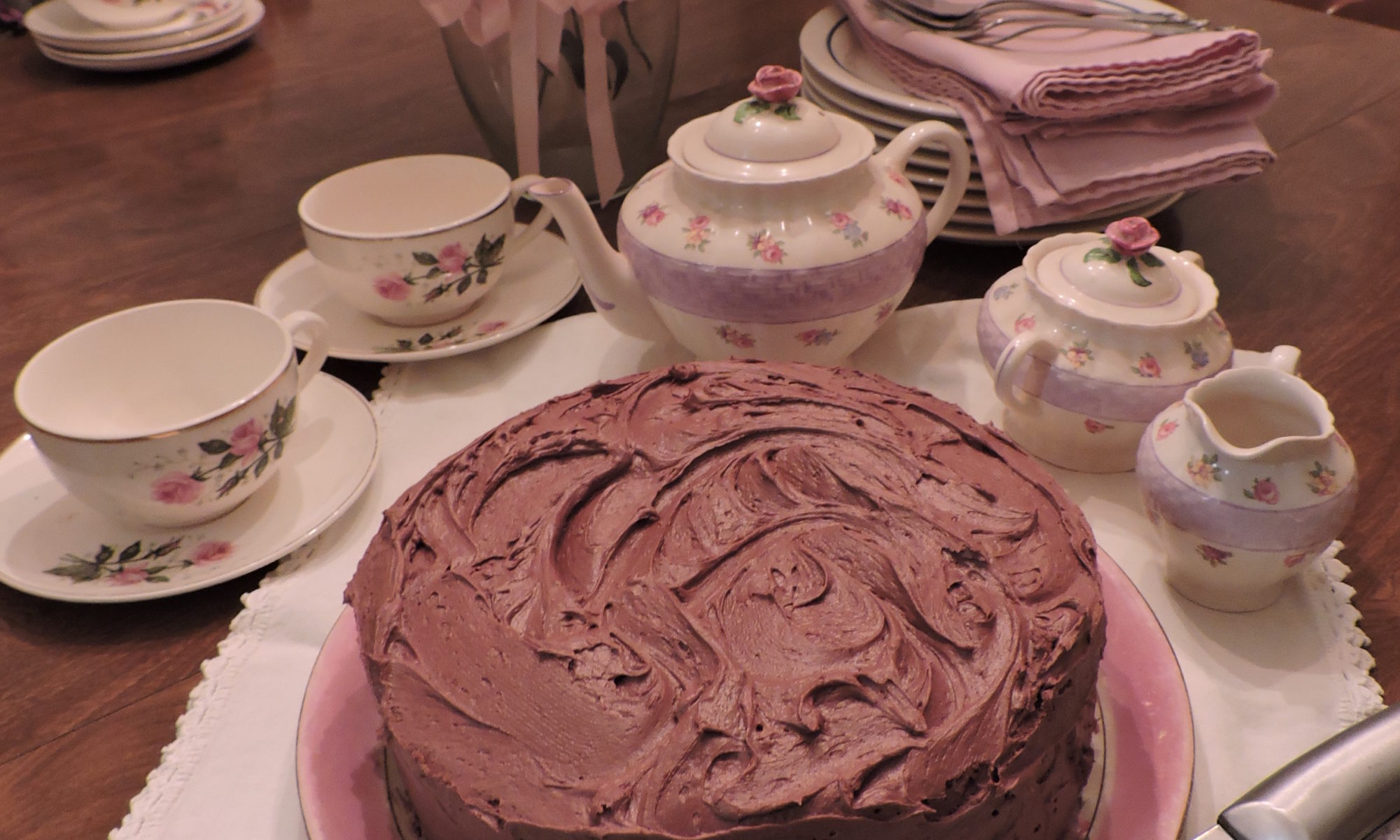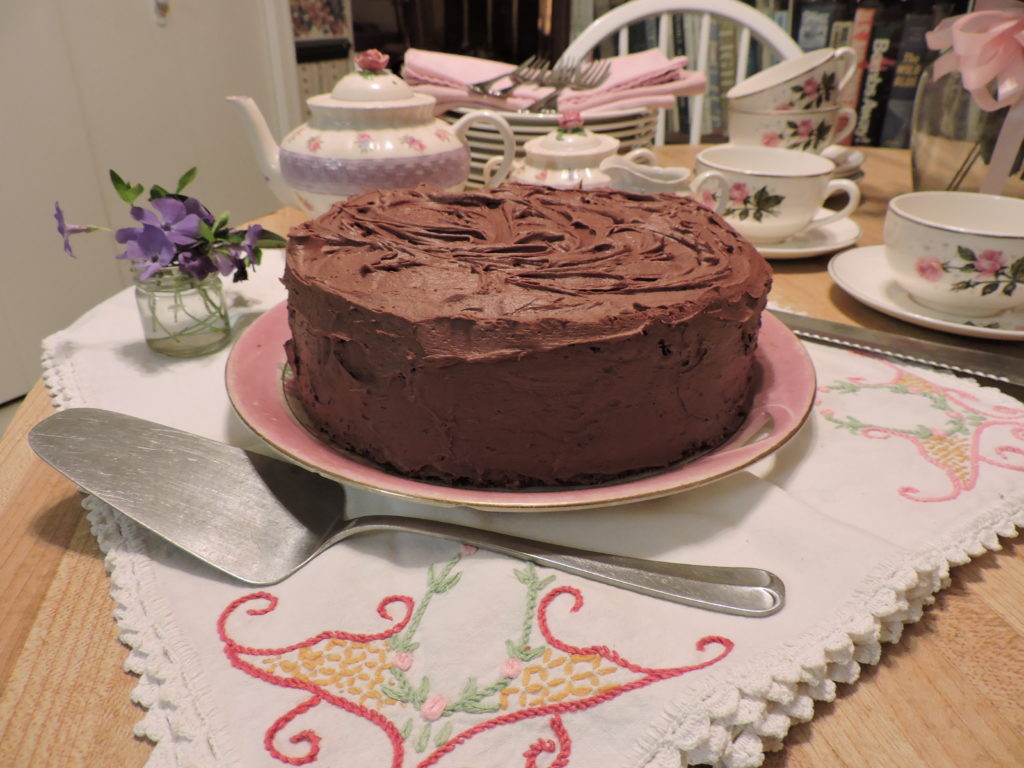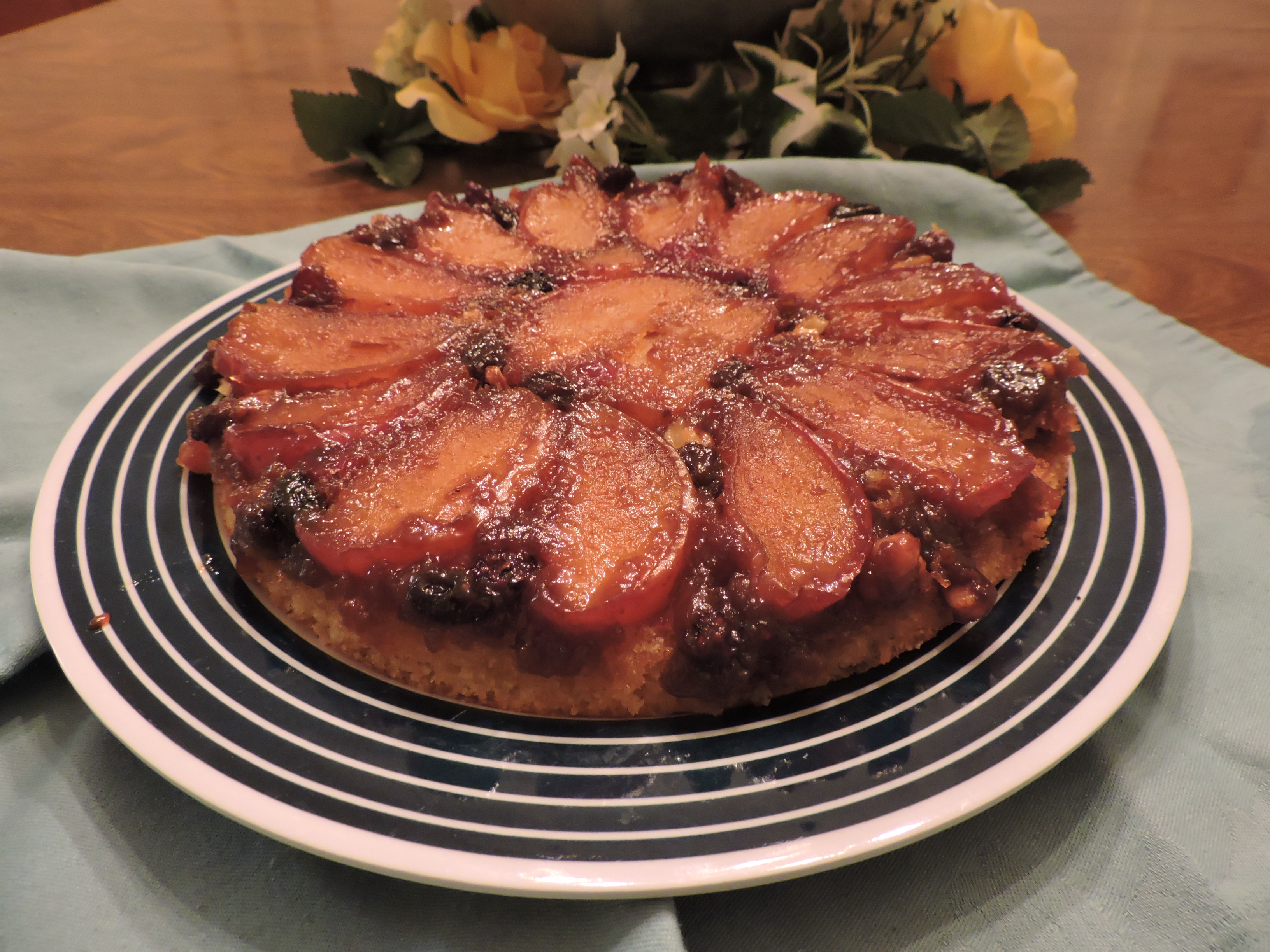Driving about beneath bright October skies, I was deep into my annual hunt for the perfect pumpkins, seeking small, solid varieties that could stand in as autumn porch decorations and later be baked or pureed.
I’d spotted numerous specimens at my local supermarket, a garden center and two churches. But most were large and ornamental …not what I was looking for.
Then I visited Diehl’s Produce stand in Olde Severna Park, Maryland which was surrounded by colorful mums and pansies. Inside, I found late season produce and more than 20 varieties of pumpkins, squash and gourds.
There were giant pumpkins suitable for jack-o-lanterns, modestly-sized “Spookies”, and crates full of mini-pumpkins with names like Wee Bee Little, Jack be Little, and Orange Mon.
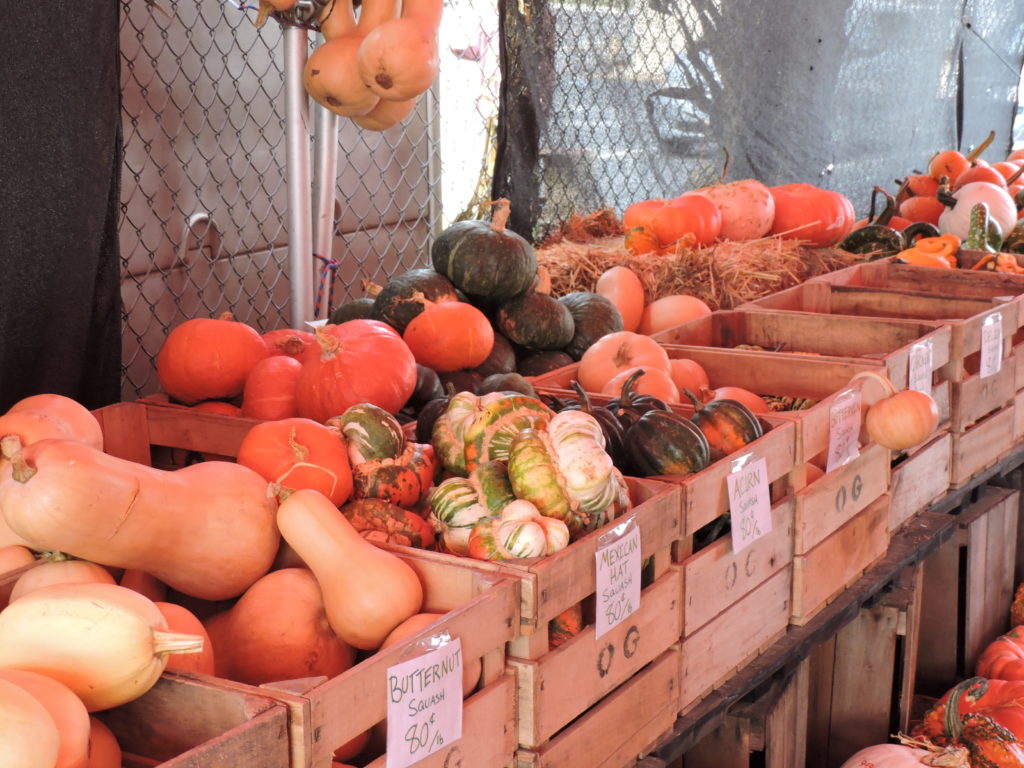
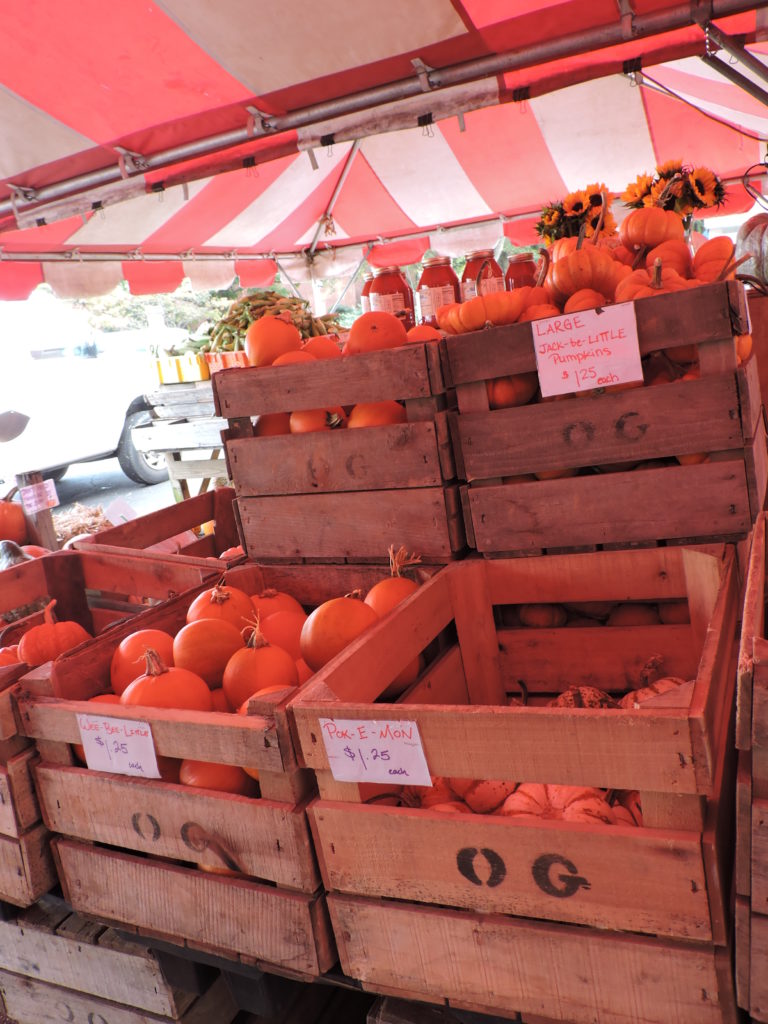
Hoping to find baking varieties, I cornered produce guru Elliott Enderkin for suggestions. He recommended “sugar pumpkins” which come in various sizes and are noted for their sweet, solid flesh. But “peanut pumpkins” – so named because the rinds are covered with growths resembling peanuts – were his second choice since they also make good pies. His third choice, orange-fleshed long-necked squash – are equally flavorful.
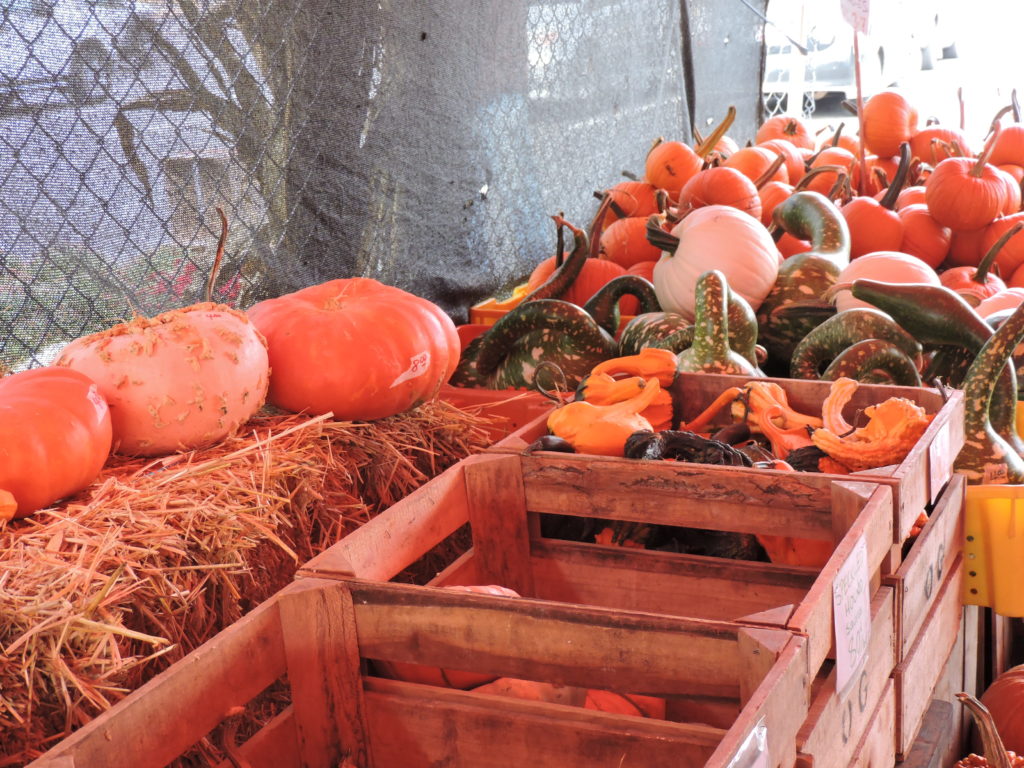
Winter squash are decorative and just as yummy as pumpkins for roasting, making soups or baked goods. Diehl’s selection included dark green or orange acorn squash, striped Mexican Hat and Carnival squash, pale orange Butterkin squash, Speckled Hound squash, and emerald gooseneck squash with speckles. It was hard to choose but I bought a large sugar pumpkin and two acorn squash.
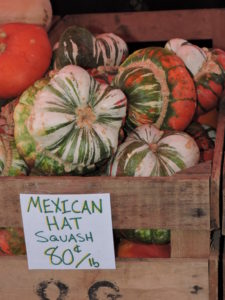
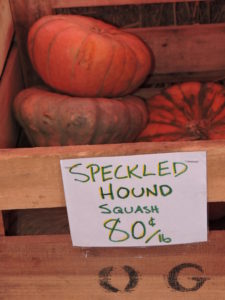
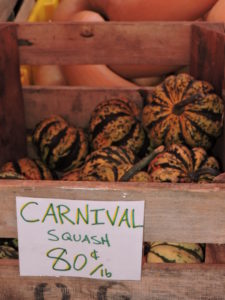
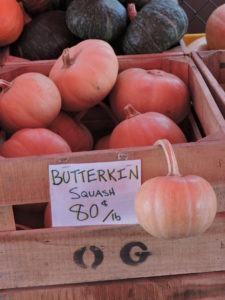
Stopping next at Pumphrey’s Farm Stand in Millersville, Maryland, I passed by bins of squash, heirloom tomatoes and colorful peppers to a table piled high with small orange pumpkins that felt very solid. Assured they were perfect for cooking and baking, I bought several.
I displayed my purchases as porch decorations along with pots of yellow chrysanthemums, an autumn-hued wreath and a door decoration of “fall corn” with a few kernels missing thanks to an ambitious mouse.
After Thanksgiving, I retrieved the pumpkins and then baked, cooled and pureed them as bases for pies, cakes, cookies, muffins, pumpkin bread, pancakes and soups. Here’s my easy method.
Pumpkin Puree
Wash pumpkins – Do not peel
Fill a large baking pan with 2 to 3 inches of water.
Add 1 large or two small pumpkins to each pan.
Bake at 375 degrees until done. (Rind will darken, take on a sheen…sides will collapse and flesh will be soft.)
Cut pumpkin in half
Scoop out seeds (rinse and save for roasting)
Scoop out flesh into large container
Use hand blender to turn the flesh into a smooth puree. Alternatively, add the flesh to a food processor or blender.
Divide the puree into ½ cup and 1 cup portions and use or freeze.
Pumpkins and squash are loaded with Vitamin E (Alpha Tocopherol), Thiamin, Niacin, Vitamin B6, Folate, Iron, Magnesium and Phosphorus, and are good sources of Dietary Fiber, Vitamin A, Vitamin C, Riboflavin, Potassium, Copper and Manganese. The seeds are nutritional powerhouses and when ground, add wonderful flavor and texture to pancakes, muffins and cookies.
The recipe for pumpkin muffins below is a nutritional powerhouse
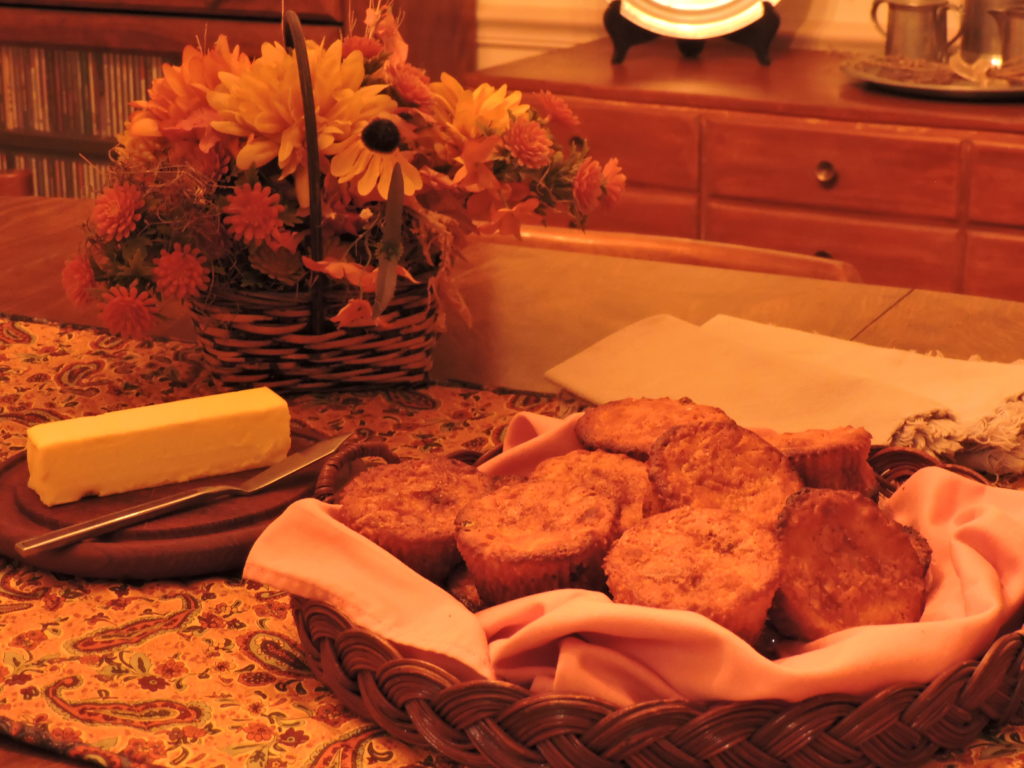
I’m most inspired to make them when autumn leaves begin to fall. But, truth be told, I like these muffins any time of the year.
The recipe’s based on one for banana muffins I cut out of a newspaper and modified by substituting pumpkin for bananas and increasing the amount of sugar used. I continue to play around with ingredients that add texture including pecans, walnuts, sunflower seeds and/or ground pumpkin seeds.
Pumpkin muffins are hearty and perfect to serve for breakfast or afternoon tea. I’ve even served them to hungry jazz musicians taking a break from rehearsing. Here’s the recipe.
Perfect Pumpkin Muffins
(Makes 1 dozen)
1 cup old fashioned oats uncooked
1 cup all-purpose or unbleached flour
1 pinch salt
1 tablespoon baking powder
1/2 cup brown or white sugar
1/2 teaspoon cinnamon
1 pinch ginger
1 egg
1 cup whole or low fat milk
1/2 cup pumpkin puree (thawed if frozen)
1/4 cup canola oil
1/2 cup raisins and/or dried cranberries
1/4 cup pecans, walnuts, or sunflower seeds
Heat oven to 400 degrees. Grease muffins tins or line 12 muffin cups with paper baking cups
Plump raisins and/or cranberries in hot water
Combine oats, flour, baking powder, pinch salt, cinnamon, and ginger. Add
Add combined wet ingredients. Mix until dry ingredients are moistened.
Drain and add raisins/cranberries
Fold in nuts or sunflower seeds
Fill muffin cups 3/4 full and bake 20 to 25 minutes or until golden brown
Pumpkin puree may also be used to make the fantastic dessert below.
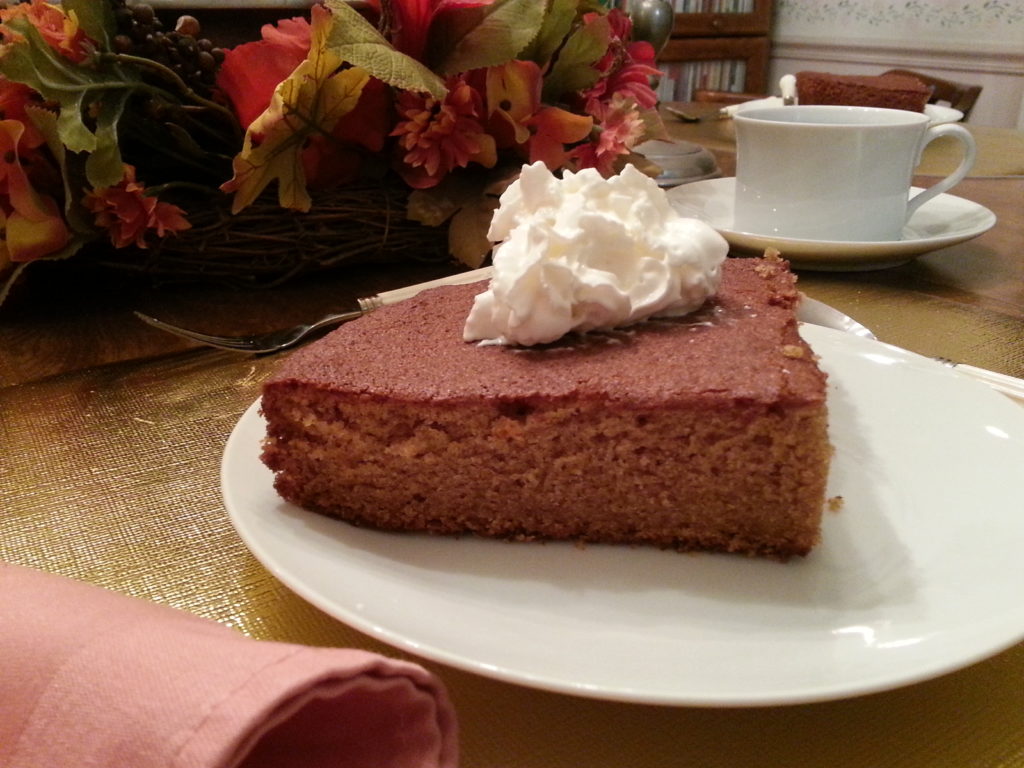
The best recipe for pumpkin cake I’ve ever eaten came from my mother Margaret. It’s easy to make and smells wonderful when baking.
The cake is so moist, rich and delicious that I serve it simply with a dollop of whipped cream. However, it may be iced with cream cheese frosting.
Margaret Owings’ Pumpkin Cake
4 eggs
1-2/3 cups sugar
1 cup oil (I use canola)
2 1-cup portions of pumpkin puree (thawed) or 16 ounces canned pumpkin
2 cups flour
2 tsps. baking powder
2 tsps. cinnamon
1 tsp. salt
1 tsp. baking soda
Combine eggs, sugar, oil and pumpkin puree and mix well
Blend dry ingredients together in a separate bowl
Add to wet ingredients a bit at a time beating well after each addition
Bake in ungreased sheet pan at 350 degrees for 25 to 30 minutes. (You can halve the recipe and bake in an 8 inch round pan.)
My mother used canned pumpkin but I substitute homemade pumpkin puree as it produces a better texture. For an unexpected twist, sprinkle pecans across the top of the batter before baking.

